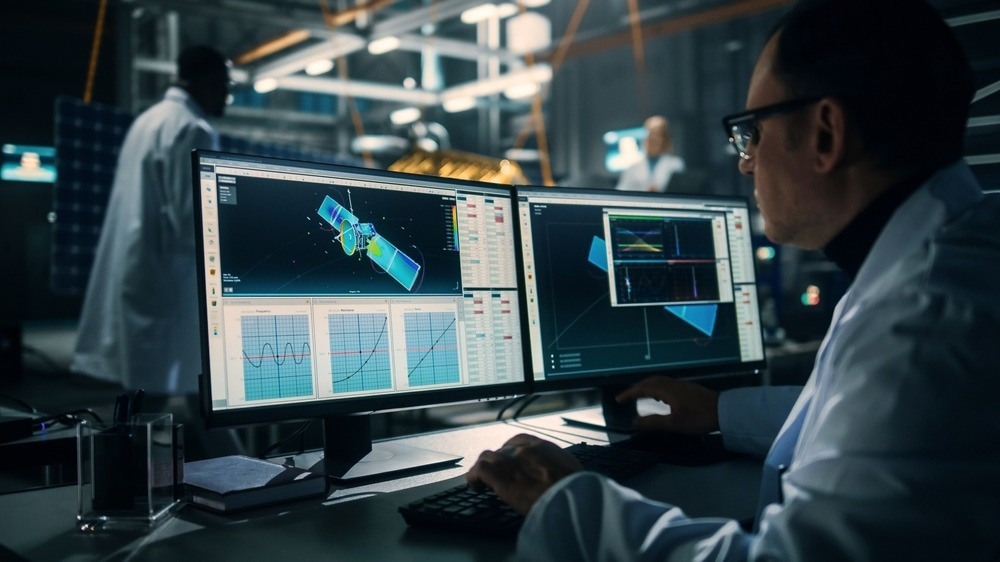A recent study published in the journal PLOS ONE uses metagenomics to examine the microbial composition in samples obtained from the Jet Propulsion Laboratory (JPL).

Study: Multi-faceted metagenomic analysis of spacecraft-associated surfaces reveal planetary protection relevant microbial composition. Image Credit: Gorodenkoff / Shutterstock.com
Maintaining the cleanliness of spacecraft
The JPL has several metagenomically-monitored cleanrooms where spacecraft can be assembled. These cleanrooms are maintained with ultra-low particulate air (ULPA) or high-efficiency particulate air (HEPA) filtration systems. Different personal protective equipment (PPE) levels are needed to ensure cleanliness standards.
The microbial burden of spacecraft has been historically monitored using culture-based approaches. Over time, non-culture-based methods have been introduced for microbial profiling. The feasibility of metagenomic approaches is being tested for microbial identification, quantification, and functional assessment in spacecraft-associated spaces.
About the study
In the present study, researchers apply shotgun metagenomics to assess microbial composition and burden in JPL cleanrooms. Samples were collected from controlled environments of the JPL cleanrooms and sent to Translational Genomics Research Institute (TGen) for DNA extraction and whole metagenomic sequencing (WMGS) analysis.
Specimens were of five categories, including DNA from cleanrooms, surface wipe samples, flow bench pre-filter samples, cleanroom vacuum samples, and technical DNA replicates. The fungal and bacterial load was measured using FungiQuant and BactQuant quantitative polymerase chain reaction (qPCR) assays, respectively.
Additional tests were performed to identify human/plant DNA present in samples. Fifty-three samples, 50 of which were obtained from JPL and three from TGen, were prepared for WMGS using the Celero DNA-sequencing kit based on adapter-dimer-free technology. DNA libraries were quantified and visualized to evaluate quality and size.
Sequence reads were segmented into non-overlapping 50-mer fragments and taxonomically classified using the MTSv pipeline. Additionally, Bayesian re-estimation of abundance after classification with Kraken (Bracken) and MetaPhlAn2 tools were used for taxonomic classification. A Kyoto encyclopedia of genes and genomes (KEGG)-based functional analysis was performed using 50-mer fragments.
Study findings
In MTSv analysis, when input DNA was low, the quality of sequencing libraries was poor, and few organisms were detected. These specimens had traces of Ralstonia solanacearum and Staphylococcus aureus, which were likely low-level contaminants, as they were also present in control and buffer blank samples. Many samples also contained human DNA.
Two samples had the highest non-contaminant taxa, such as Micrococcus luteus, Cutibacterium acnes, and Pseudomonas stutzeri, while five samples had few taxa. High-quality libraries had substantial taxonomic diversity.
Vacuum samples formed a tight cluster with the least taxonomic composition differences. These samples were dominated by Moraxella osloensis and other organisms of concern, including Sphingomonas and Roseomonas, for planetary protection.
Methylobacterium was present in all samples, while Modestobacter marinus, Blastococcus saxobsidens, and Geodermatophilus obscurus were detected in some. Technical DNA replicates formed a less diverse cluster comprising Methylobacterium populi, Sphingomonas spp., Serratia marcescens, Chryseobacterium indologenes, Clavibacter spp., and Massilia spp.
Wipe samples did not form a cluster. Bench pre-filter samples had similar profiles as wipe samples. Vacuum samples and technical DNA replicates formed distinct clusters in MetaPhlAn2 and Bracken analyses.
All samples had a high signal for isoleucine and valine synthesis pathways, while technical DNA replicate samples exhibited a high abundance of tricarboxylic acid (TCA) cycle, transfer ribonucleic acid (tRNA) charging, histidine/arginine synthesis, and TCA-glyoxylate and glyoxylate bypass pathways.
KEGG functional analysis identified five proteins predicted to have sporulation-associated functions in certain samples. All samples had catalase-peroxidase, and no radiation resistance-associated protein was identified.
Bray-Curtis dissimilarity between KEGG orthologs was used in the principal component analysis. This resulted in substantial clustering based on sample location and type, which is similar to taxonomic clustering.
A total of 18 high-quality metagenomic assembled genomes (MAGs) were assembled using sequence reads.
A detailed analysis of two datasets was performed by running the nucleotide basic local alignment search tool (blastn). In one of the datasets, M. osloensis was the most abundant at 37%, as identified by MTSv and Bracken. By contrast, the skin fungus Malassezia restricta was the most abundant at 29% in the other dataset, followed by C. acnes at 15%.
Conclusions
Taken together, the researchers identified microbes associated with the floor surfaces and filter samples at JPL cleanrooms. Most of the identified microbes were human skin-associated organisms or environmental microbes from Actinobacteria and Proteobacteria.
Vacuum samples were of the greatest concern for planetary protection, as they comprised several taxa with potential resistance to radiation, heavy metals, and desiccation. Functional annotation could not identify proteins associated with spore formation and desiccation/radiation resistance.
Journal reference:
- Highlander, S. K., Wood, J. M., Gillece, J. D., et al. (2023). Multi-faceted metagenomic analysis of spacecraft associated surfaces reveal planetary protection relevant microbial composition. PLoS ONE. doi:10.1371/journal.pone.0282428